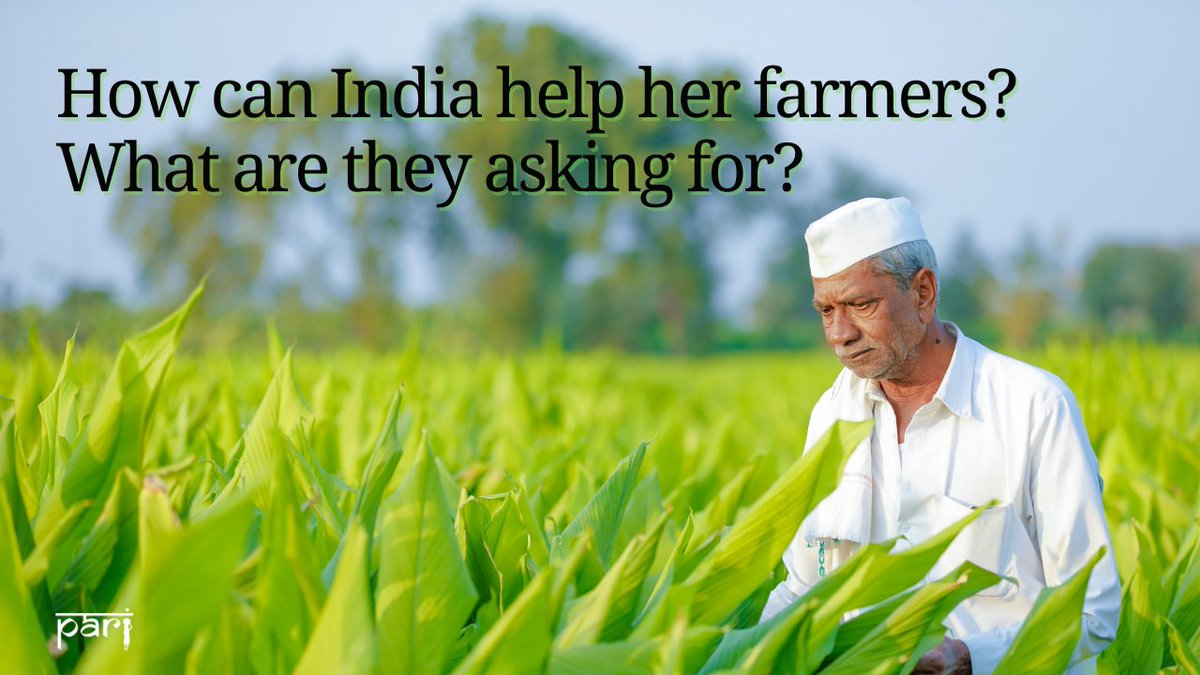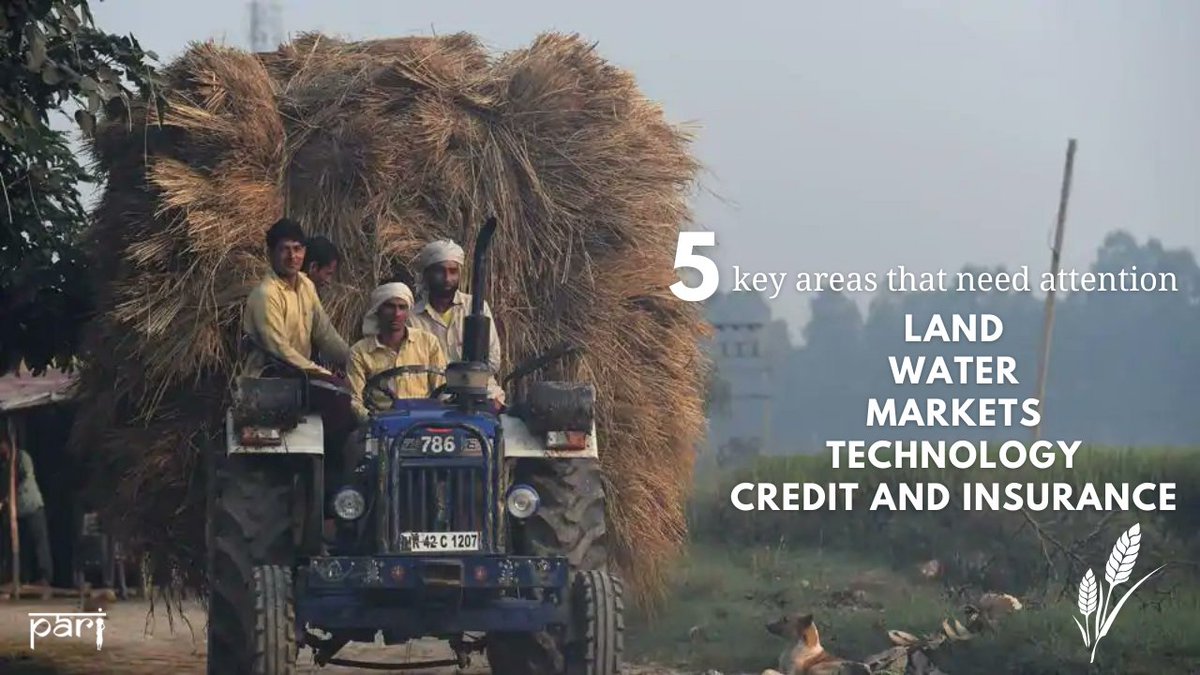
We take you to the mandis in rural Punjab to get a sense of the robust network of APMC markets and yards. These are crucial to the food security of India and a price assurance mechanism for the farmers. 🧵
ruralindiaonline.org/en/articles/in… | By Novita Singh 📷
ruralindiaonline.org/en/articles/in… | By Novita Singh 📷

2| A combine unloads the wheat grain into a tractor, which will carry it to the nearby Sunam mandi in the Sangrur district. This process is repeated multiple times over the day. The harvesting season starts around Baisakhi in mid-April and is at a peak for the next 10 days 

3| The Sunam mandi in Sangrur is a principal yard. While the main season of activity in the state’s mandis is during the wheat harvest (April) and the paddy harvest (Oct-Nov), marketplaces function throughout the year, trading in pulses, cotton, oilseeds. 

4| The process of harvesting in Punjab is mostly mechanised after the Green Revolution era. Around 176 lakh tons of wheat was produced in the state during 2019-20, which was grown on roughly 35 lakh hectares with an average yield of 20.3 quintals /acre 

It’s a massive grid – 152 main yards, 279 sub-yards and 1,389 purchase centres across Punjab (in 2020). Together, it forms a safety net for farmers. A farmer feels secure in this mandi system, says Jaswinder Singh (42) of Longowal town in Sangrur, whose family cultivates 17 acres 

6| All the farmers bring their produce to the mandis to be auctioned: around 132 lakh metric tons of wheat was procured by state and central government agencies in 2021 (with private traders buying less than 1% of the total produce) 

7| Roop Singh, a 66-year-old farmer from Sheron village in Sangrur district: he was been sitting in the local mandi with his produce since it arrived and will continue to be there it is packed and sold – the process can take between 3-7 days 

8| Women labourers carrying wheat to the thresher, where the husk is removed from the grain, at the Sunam yard. Women form a major portion of the workforce at the mandis 

9| A labourer cleans a pile of wheat to remove any traces of husk from top, with the thresher in action behind her, at Sunam mandi 

10| A labourer at the Sheron mandi sealing the bags of wheat after it is sold. The labourers are hired by the arhtiyas for this process 

11| Weighing of the wheat. The APMC network ensures that crops are procured in a regulated process by private traders or government agencies like the Food Corporation of India or Markfed (Punjab State Cooperative Supply & Marketing Federation Limited), 

12| Resting during the afternoon at the Sheron mandi. Most of the labourers here now come from Bihar and Uttar Pradesh 

13| Labourers and farmers at the Sunam mandi resting on sacks of wheat which contain the stock purchased by government agencies 

15| Workers in the evening at the Sheron mandi. The scale of wheat harvesting is massive during the peak days, so they extra work long hours, with tractors full of grains arriving even during the night 

18| A farmer sets up his bed for the night at the Sheron mandi to guard his produce until it is sold 

19| Mahender Singh from Namol village in Sangrur district sitting at his arhtiya’s shop inside the Sunam mandi . Apart from acting as moneylenders, arhtiyas also help with providing the farmers with pesticides, fertilisers and other farming inputs. 

20| Ravinder Singh Cheema, president of Punjab’s Arhtiyas Association in the Sunam mandi. He says that without an assured MSP the farmer will be exploited by the private trader 

Farmers in Punjab say the vast and accessible network of mandis across the state offers them security, along with MSP and other reliable processes – and they fear these will be dismantled by the new farm laws.
Read the full article by Novita Singh here: ruralindiaonline.org/en/articles/in…
Read the full article by Novita Singh here: ruralindiaonline.org/en/articles/in…
• • •
Missing some Tweet in this thread? You can try to
force a refresh













